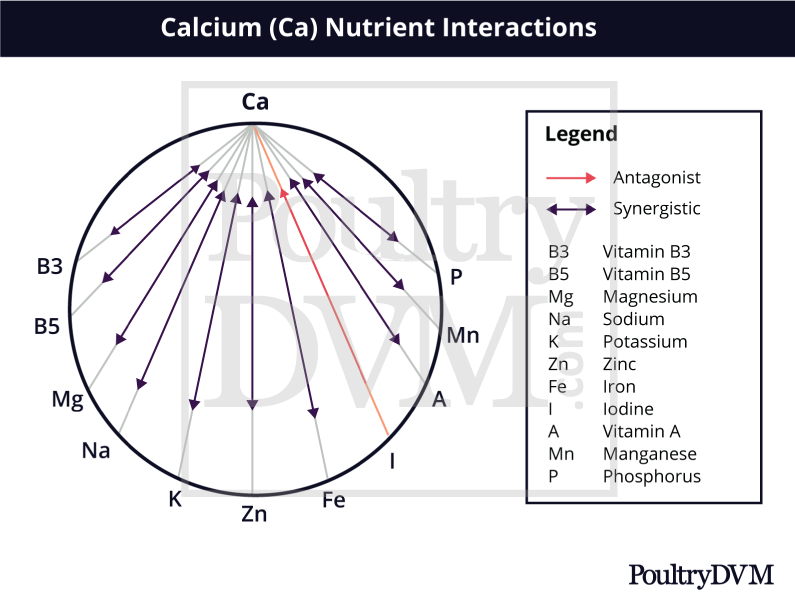Hypocalcemia occurs when a chickens blood-calcium levels are dangerously low. It is mainly a problem in hens, especially ex-battery hens and breeds known for having excessive egg production traits. This is because egg-laying requires calcium to form the eggshell, resulting in depletion of it from her own body.
Causes of Hypocalcemia in Chickens
There are many causes of hypocalcemia in chickens, even for birds that receive adequate amounts of dietary calcium in their daily diet. Dietary calcium can be reduced in chickens receiving:
- Diets with too much phosphorus, such that it off balances the Ca:P ratio which should be 2:1.
- Foods high in oxalic acid (cassava, spinach, carrots, beet leaves, lettuce, sweet potatoes, turnips) which form insoluble calcium oxalates and decreases calcium availability.
- Excess vitamin C
Several different vitamins and minerals interact with calcium, some act with calcium, and are required in order for the body to absorb it, and others act against it (antagonists).
Calcium Food Sources
| Ingredient | % Ca | % P |
|---|
| Limestone | 38 | - |
| Oyster shell | 38 | - |
| Calcium carbonate | 40 | - |
| Bone meal | 26 | 13 |
| Monocalcium phosphate | 17 | 25 |
| Dicalcium phosphate | 21 | 20 |
| Tricalcium phosphate | 23 | 19 |
| Defluorinated rock phosphate | 34 | 19 |
| Curaco phosphate | 35 | 16 |
| Phosphoric acid (75%) | - | 25 |
Calcium Nutritional Requirements for Chickens
Requirements for calcium in chickens at various life stages are:
| Feed Type | Bird Age | Ca | P | Vitamin D3 |
|---|
| Chick Starter | Hatch to 6 weeks | 0.90% | 0.40% | 200 ICU |
| Grower | 6 to 20 weeks | 0.80% | 0.30% | 250 ICU |
| Layer | 20 weeks and older | 4% | 0.31% | 375 IU |
| Breeder | 20 weeks and older | 3.25% | 0.35% | 300 IU |
In order for chickens to be able to absorb calcium, they require adequate amounts of phosphorus (P) and vitamin D3.
